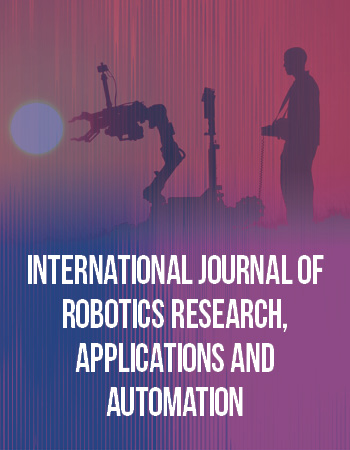Editorial Article
Real Paradox as Self-Driving Age Nears
Professor, Robotics and Multiperception Lab (RAM-LAB), Department of Electronic and Computer Engineering, Department of Computer Science and Engineering, Robotics Institute, Hong Kong University of Science and Technology, Hong Kong
*Corresponding author: LIU Ming, Professor, Robotics and Multiperception Lab (RAM-LAB), Department of Electronic and Computer Engineering, Department of Computer Science and Engineering, Robotics Institute, Hong Kong University of Science and Technology, Hong Kong, E-mail: eelium@ust.hk
Received: October 29, 2018 Accepted: October 30, 2018 Published: November 6, 2018
Citation: Ming L. Real Paradox as Self-Driving Age Nears. Int J Robot Res Appl Autom. 2018; 1(1): 1. doi: 10.18689/ijra-1000101
Copyright: © 2018 The Author(s). This work is licensed under a Creative Commons Attribution 4.0 International License, which permits unrestricted use, distribution, and reproduction in any medium, provided the original work is properly cited.
There is nothing hotter than self-driving vehicles in the robotics and AI world lately.
From airborne to underwater drones, from delivery vehicles to full function, selfdriving automobiles conducting real-world road tests, recent developments in the industry seem to suggest that a fully automated future is coming sooner than later. But is this future a pending reality or just a pipe dream by its stakeholders? To answer this question, one first has to understand the technology behind self-driving automobiles, and the challenges they face.
To make self-driving automobiles function technically in the real world, a 4G connected network of all components involved—the vehicle, road intelligence, and other auxiliary systems, such as sensors and cameras on cars and roads, is all but essential. The vehicles will have to be able to realize and differentiate objects on the road (such as humans), and they would be required to make decisions on their own— what is the best route to reach the destination, and how do they go there safely—by analyzing a vast amount of driving data collected in different traffic conditions and simulating the driving behavior. Many governments and companies agree that selfdriving will be the future, but the truth is the infrastructure required does not exist in our world yet.
There is also the challenge of social acceptance. How do we balance between road safety and AI decision making, and what kind of new regulations will be required to make drivers feel comfortable enough to be on the same road with a self-driving car, such as a special lane for driverless vehicles? The paradox is that self-driving technology can only learn and become safer from real world experience, but the public would always want the technology to be perfect before deployment. There will be compromises.
Compared to self-driving passenger cars, automated logistics vehicles are developing in a much higher pace, due to relative simplicity in the technology and strong economic incentives. Technically, these low-speed and small-sized vehicles without passengers represent a much lesser threat to traveler safety, and financially, they are the ideal logistic tool especially in many parts of China, where online shopping continues to soar and the population is widely scattered.
Already, big technology companies such as Alibaba are pouring in major investments, and some are claiming that demos would be ready in two years. From then on, a realworld deployment in five years may not be a pipe dream. As a researcher in this field, we invite all colleagues in this area or related to submit your latest work to IJRA. Letʼs embrace the self-driving age in the near future.


